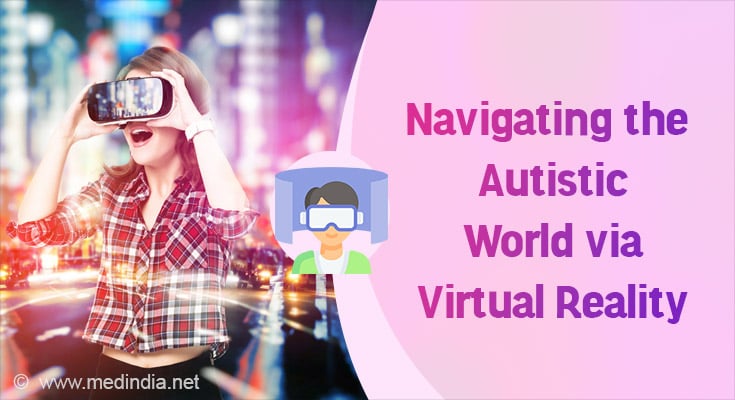While most people primarily associate virtual reality headsets with interactive video games, a recent study is using them for something far more important: helping persons with autism to navigate the public transportation networks on college campuses (
).
Autism is a neurodevelopmental disorder that affects the brain’s normal development of social and communication skills in early childhood. Autistic persons are not slow learners or of a lesser
instead they have difficulty in communication and social interaction.
There is no single known cause for autism. While there is no definite cure for autism, psychosocial interventions such as behavior and communication therapies can help people with the condition live normal lives by reducing symptoms.
Virtual Reality Simulation Mimic Real World Outlook for Autistic Individuals
Researchers from the University of Cincinnati and the University of Georgia focused on offering virtual training alternatives to autistic individuals in an effort to integrate them with society.
Advertisement
The study examined a sample of young bus system navigation abilities of autistic people. Hence, the team created a precise duplicate of a university’s campus and shuttle system using virtual reality simulation.
They used an AI technique called “computer vision” to examine how participants wearing the virtual reality headset responded to physical objects as they navigated the campus to the bus stop. Then the data was compared to normal individuals for any variations.
The research team found that people with autism spectrum disorders often have different perceptions of their environment than normal people and that they exhibit abnormal attention and gaze patterns due to difficulties with sensory processing under overstimulating conditions.
Many autistic people struggle with sensory processing, and some situations can be extremely stressful and anxiety-inducing, such as waiting at a bus stop amid a bustling college campus (2✔ ✔Trusted Source
Children on the Autism Spectrum and the Use of Virtual Reality for Supporting Social Skills
Go to source).
By identifying which objects were most distracting to autistic learners during their travel and what objects were being attended to the most, it is possible to adjust or eliminate those extra stimuli in a secure, controlled setting before participants do that action in the real world.
Benefits of AI-assisted Virtual Reality in Autism
The cutting-edge technology of virtual reality can help autistic people in the following ways-
-
These VR simulations can help autistic people feel more at ease in society, boost their self-confidence, and become more contributing members of society overall. - It helps to better understand how they interact with environments and can assist special education professionals, intervention specialists, and instructional designers in supporting autistic individuals.
- They can also provide training opportunities for autistic learners who are interested in cybersecurity and science, technology, engineering, and math (STEM)-related fields.
- It may lead to further opportunities to promote inclusive learning environments and a deeper comprehension of how people with autism interact and use technology.
The results pave the way for more research into how virtual reality simulations, which offer a secure environment for practicing different skills that can help autistic persons build their sense of self and community involvement.
References :
- Through the lens of artificial intelligence: A novel study of spherical video-based virtual reality usage in autism and neurotypical participants – (https://www.sciencedirect.com/science/article/pii/S2949678023000351)
- Children on the Autism Spectrum and the Use of Virtual Reality for Supporting Social Skills – (https://www.ncbi.nlm.nih.gov/pmc/articles/PMC8870236/)
Source: Medindia



